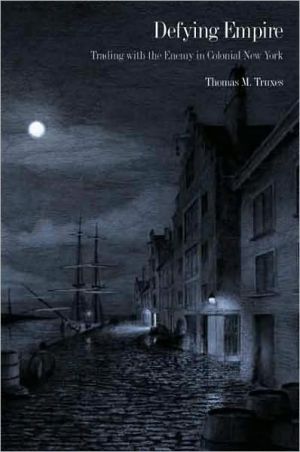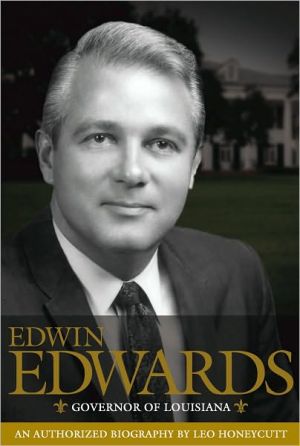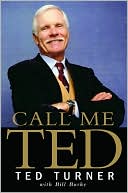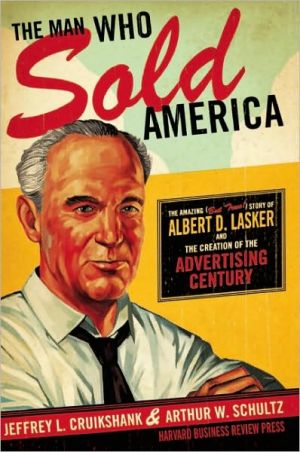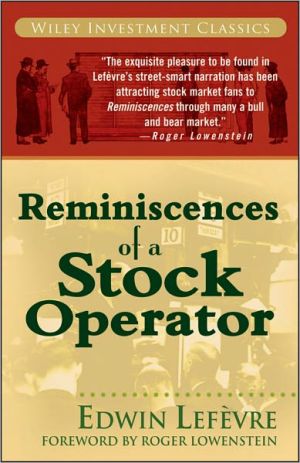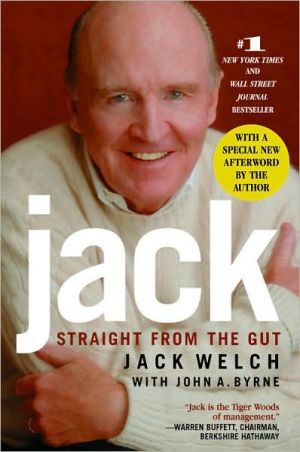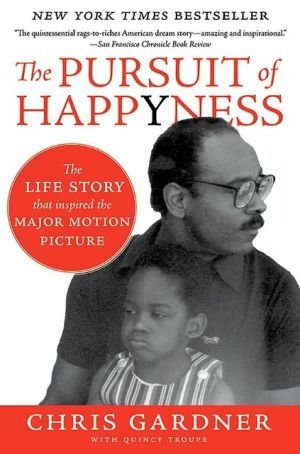Defying Empire: Trading with the Enemy in Colonial New York
This enthralling book is the first to uncover the story of New York City merchants who engaged in forbidden trade with the enemy before and during the Seven Years’ War (also known as the French and Indian War). Ignoring British prohibitions designed to end North America’s wartime trade with the French, New York’s merchant elite conducted a thriving business in the French West Indies, insisting that their behavior was protected by long practice and British commercial law. But the government in...
Search in google:
An original and engaging account of illicit trading by New York City merchants-some of whom became America's Founding Fathers-during the French and Indian WarFinalist for the 2009 Francis Parkman Prize sponsored by the Society of American Historians Matthew J. Wayman - Library Journal In the first half of the 18th century, France and Britain engaged in several wars for control of North America, culminating in the Seven Years' War (1756-63). Throughout that time, enterprising Colonial merchants engaged in controversial trade with French ports. Using a multithematic approach, Truxes (senior lecturer in history, Trinity Coll., Hartford; Irish American Trade, 1660-1783) examines New York City's participation in smuggling and privateering before and during the war, both at sea and on the city's streets. Combining elements of political, economic, military, social, and legal history, Truxes describes the operations in which merchants and sailors engaged. He presents both the merchants' views that their practices were perfectly legitimate and the Crown's perspective that these acts were treasonous. All the while, Truxes keeps the book's theme in context, providing brief overviews of the war's major events and the influence those events had on domestic trade and politics. Helpful end matter includes a chronology of events, glossaries of persons and terms, relevant legal decrees, and notes. This lively and scholarly analysis of a largely untreated topic would be an excellent purchase for academic libraries and public libraries with strong Colonial history collections.
Defying Empire\ Trading with the Enemy in Colonial New York \ \ By Thomas M. Truxes \ Yale University Press\ Copyright © 2008 Yale University\ All right reserved.\ ISBN: 978-0-300-11840-7 \ \ \ Chapter One\ A City at War\ A British warship bound for New York City cut a striking figure during the Seven Years' War. A formidable presence, it could be trim and handsome under cloudless blue skies, white sails bright with reflected sunlight, or raw, dirty, and weather-scarred, battling gales and lashing rains in the North Atlantic.\ If it were arriving from the northeast-perhaps from the Royal Navy base at Halifax, Nova Scotia-its officers would keep a keen watch for Montauk Point at the eastern end of Long Island. If coming in from the West Indies or the colonies to the south, it would have worked its way north along the Capes-Hatteras, Henry, and Henlopen.\ By whatever route, the New Jersey highlands would be a welcome sight from high atop the mainmast of one of His Majesty's fighting ships, especially before the inauguration of Sandy Hook Lighthouse in 1764. Known variously as Navesink, Never Sink, Never Sunk, Navasink, and even Navysunk, those coastal hills with their distinctive shape guided thousands of ships toward Sandy Hook, New Jersey, the entry point into lower New York Bay.\ Approaching Sandy Hook, a warship would fire one of its great guns to call a harborpilot to guide it through the difficult passage. The seemingly easy entrance into the broad lower bay was, in fact, obstructed by sandbars, shoals, and mudflats. Much of the twenty-one-mile journey from Sandy Hook to New York City was treacherous to both a warship and the career of its commanding officer, who was required to account for damage to his vessel.=\ To enter the bay, the pilot would guide the ship close to Sandy Hook through a narrow and intricate channel just twenty-one feet deep. Once inside, some captains would make their anchorage in six fathoms of water and use small sailing craft to shuttle back and forth to the city. But most preferred mooring closer to New York. To achieve this, the pilot would continue west into the lower bay until the vessel reached a point directly north of Navesink. He would then guide it north-by-northeast following a channel that ran between two large and dangerous shoals. Off Coney Island, the pilot would once again alter course. Sailing north-by-northwest, the fighting ship would move through the center of the Narrows between Bluff Point on Staten Island and New Utrecht, Long Island (present-day Bay Ridge, Brooklyn).\ As the ship entered upper New York Bay, a breathtaking vista would open up. In the distance on a clear day a compact little city nestled comfortably between rivers of blue. Tiny spires and cupolas; slate, tile, and wooden roofs; and the stonework of the citadel caught the glint of the sun as harbor craft moved about in a forest of masts. A rolling green landscape enclosed the remaining upper bay, sweeping from the high bluffs west of the city down to Staten Island and then back around again to the city along the western shore of Long Island. New York City was a jewel in a magnificent setting.\ Now under light sail, the warship would work its way toward Manhattan along a familiar passage through muddy shoals that reached out from New Jersey on the west and Long Island on the east. As the journey neared its end, the captain would guide the imposing vessel past Governors Island into a busy river thoroughfare where the vital and energetic city pushed hard against the water's edge, the sights and sounds and smells tumbling aboard the ship as it lay "moored in the East River."\ * * *\ The New York that became so deeply entangled in wartime trade with the French combined elements of an elegant city, a cosmopolitan seaport, and a raw frontier town. "I had no idea of finding a place in America consisting of near 2,000 houses, elegantly built of brick, raised on an eminence, and the streets paved and spacious; furnished with commodious quays and warehouses, and employing some hundreds of vessels in its foreign trade and fisheries," wrote a British naval officer aboard a warship in the East River. "Such is this city, that a very few in England can rival it in show, gentility, and hospitality."\ The population stood at about 13,000 in 1756 and rose to a wartime high of just over 20,000 by 1760-infinitesimal compared to Manhattan's peak population of 2.3 million in 1910 and its present population of about 1.6 million. (In 2008 the population of the five boroughs of modern New York City was roughly 8.4 million.)\ Still, colonial New York was a crowded and diverse city, "a great mixture of manners and customs," noted an Irish visitor in 1760. In addition to the Dutch, French, Germans, and English, there were Irish and Scottish newcomers, who figured prominently in urban life, as did the small but important Jewish community. Free and enslaved black Africans, who, in the words of a naval officer, "lie under particular restraints," made up roughly 18 percent of the population.\ This mixing of peoples was evident in the city's non-English-speaking churches-three Dutch, one French, and one German. There were Dutch and French translators at City Hall to expedite legal business, and enough Spanish was spoken to justify the commissioning of a Spanish interpreter in 1753. The city's large itinerant population, drawn by the lure of privateering and a wide array of wartime opportunities, represented an even broader sampling of ethnicities.\ For those with the means to enjoy it, New York was a charming city. There were simple pastimes like strolling under the shade trees of Broadway or through the parklike Bowling Green. Wealthy men and women in the latest London fashions flocked to European-style pleasure gardens, such as those along the Hudson at the upper edge of the city (near present-day Greenwich and Warren Streets) that offered dancing, strolls through dimly lit groves, and a romantic setting for fine dining. The Spring Garden just south of the Common was a popular getaway from the hectic pace of the commercial district. In the early 1760s, the Spring Garden House offered "breakfasting, from 7 o'clock till 9; tea in the afternoon from 3 till 6; ... pies and tarts ... from 7 in the evening, till 9; where gentlemen and ladies may depend on good attendance, and the best of Madeira, mead, cakes, &c." There was theater in the evenings (including Shakespearean tragedies and popular comedies right off the English stage) as well as an abundance of music, ranging from organ works by George Frideric Handel performed at City Hall to popular favorites sung by the officers' glee club at Fort George.\ Social gatherings of New York's elite, whether elegant balls at Cranley's Assembly Room on Broadway or sumptuous parties at the Walton mansion on Queen Street-"the proudest private dwelling in this city"-were displays of wealth and status made possible by the extraordinary vitality of commercial life.\ Commanding one of the world's great deep-water harbors, New York was a busy Atlantic seaport. Its compact size-a mile wide and, on average, a half a mile long-"facilitates and expedites the lading and unlading of ships and boats, saves time and labor, and is attended with innumerable conveniencies to its inhabitants," promised one booster. "Our importation of dry goods from England is so vastly great, that we are obliged to betake ourselves to all possible arts, to make remittances," wrote William Smith, Jr., New York's first historian, in 1756. The city's seaborne commerce (across the Atlantic, to the Caribbean, and along the North American coast) was smaller than that of Philadelphia or Boston, but entrepôt activities and brokerage services allowed a favorable balance of trade, in spite of an endemic imbalance in the direct two-way exchange with Great Britain. "It is for this purpose we import cotton from St. Thomas's and Surinam; lime-juice and Nicaragua wood from Curaço; and logwood from the Bay, &c., and yet it drains us of all the silver and gold we can collect," explained Smith.\ New Yorkers had become adept at warehousing, sorting, and reshipping commodities such as rice and indigo from South Carolina, wheat and flour from Maryland, flaxseed from Connecticut, Pennsylvania, and the Merrimack Valley of northern Massachusetts, and a wide variety of articles from the European continent that entered the city in violation of British customs regulations.\ The city's entrepôt trade-the importing of goods for redistribution abroad-was a legacy of New York's Dutch past. "Our merchants are compared to a hive of bees, who industriously gather honey for others," bragged Smith. Visitors commented on the vitality of the port and "the multitude of shipping with which it is thronged perpetually." "It is generally allowed, that there is not a colony in America, which makes a better figure than this for its trade," wrote a British commentator, "or where the people seem to have a greater spirit of industry and commerce."\ Not surprisingly, commercial property was expensive in a town that already understood the connection between real estate and power. Leading mercantile families like the Crugers, Marstons, and Waltons controlled their own wharves and warehouses, and received substantial income from the rental of waterfront property. Docks and wharves along the East River were often in deplorable condition, however. "A person can't walk them without being attacked with the most nauseous smells."\ Merchants prided themselves on the speed and efficiency with which they moved goods in and out of the port. Dockworkers, crane operators, porters, carters, and teamsters were in constant motion, and a flotilla of scows and lighters shuttled between the docks and trading vessels riding in the harbor. The clatter of handcarts bouncing over cobblestones echoed along the East Side, together with the steady rhythm of heavy-footed horses straining before wagonloads of sugar, lumber, and flaxseed moving back and forth between the docklands and warehouses tucked into adjoining streets.\ Hanover Square, the center of New York's business district, was just a block inland from the waterfront. Three- and four-story buildings of red and yellow brick crowded into the busy intersection where Queen Street and the upper end of Dock Street (which together make up present-day Pearl Street) met Smith Street (where the lower end of present-day William Street becomes Hanover Square). Expensive shops and the offices of wealthy merchants collided with tradesmen, street venders, and pickpockets. Here at the commercial crossroads of the city, the Times Square of eighteenth-century New York, colorful signboards-"The Golden Key," "The Dial," "The Bible and Crown"-competed with displays of fine fabrics, watches, and books for the attention of shoppers with a keen eye for quality and fashion.\ New York City was a flourishing British seaport, but the Dutch presence in the commercial district was unmistakable. Old Dutch trading firms, like that of David Van Horne, had roots in the New Amsterdam of the seventeenth century; others, like the one managed by Robert Crommelin, were extensions of enterprises based in Amsterdam and Rotterdam; still others, like Nicholas and Isaac Gouverneur, had partners in New York City and on the Dutch West Indian islands of Saint Eustatius and Curaçao. The Dutch preference for free-flowing Atlantic commerce lived on in New York long after the peaceful transfer of the city from Dutch to English hands in 1664, and it defined the character of wartime trade.\ In streets around Hanover Square, overseas traders with English, Scottish, and Irish roots rubbed shoulders with heirs to the city's Dutch past, as well as members of the French Huguenot community, men such as Lewis Pintard, and Jewish merchants like Hayman Levy with widely dispersed commercial contacts. Notable among the hundred or so New Yorkers involved in trade with the enemy, William and Jacob Walton had strong English roots; the two Livingstons, Philip and Peter V. B., had family ties to Scotland; and Waddell Cunningham was the exemplar of the dynamic Irish presence in the city.\ Ethnic identity was strong, but it did not constrict the flow of business. The wartime partnership of James Depeyster, the scion of a respected Old Dutch family, and George Folliot, a recently arrived Irishman and Depeyster's neighbor on Dock Street, was typical of trading arrangements in mid-eighteenth-century New York.\ The diversity evident in the merchant community characterized the civil administration as well. Lieutenant-Governor James DeLancey was the son of a French Huguenot merchant who had emigrated to New York in the mid-1680s and married into a prominent Dutch family. Archibald Kennedy, the Scottish civil servant who became the collector of customs for the province of New York, likewise married into an Old Dutch merchant-landowning family.\ From the New York customhouse on lower Broadway, Kennedy and his staff attempted to regulate the commerce of the port, and nearby, at the foot of Broad Street, the Royal Exchange was a popular gathering place for those who owned the ships and cargoes. Opened in 1755, the Exchange boasted an arcaded lower level that made an ideal setting for markets and a large hall on the second floor that, with its twenty-foot ceiling, was a favored location for diners, balls, and concerts. At the top of Broad Street, City Hall housed courts and administrative departments that brought order to the busy port city. Notable among these were the Supreme Court of Judicature, the court of vice-admiralty, the office of the common clerk, and the office of the mayor of the city of New York, John Cruger.\ A significant share of business was conducted in coffeehouses and taverns. The Exchange Coffee House, situated in a room on the upper floor of the Royal Exchange, and the Merchants' Coffee House, on the corner of Wall and Little Dock Streets opposite the slave market, were by far the most important. One of New York's two maritime insurance brokerages occupied a small office on the first floor of the Merchants' Coffee House; the other was located next door. Two taverns on Broadway-the City Arms (between present-day Thames and Cedar Streets) and the nearby King's Arms-were popular retreats for merchants and army officers from Fort George. The City Arms was renowned for its ballroom and public entertainments, while the dining room at the more fashionable King's Arms, at Broadway and Crown Street (present-day Liberty Street), was spacious and well furnished; it included a barroom containing private boxes screened by silk curtains.\ In sharp contrast to the coffeehouses and taverns frequented by men of affairs were the dives, brothels, and haunts along the East River that catered to itinerant laborers and seafarers, many of them drawn to the city by the prospect of quick wartime riches. The New York waterfront was also a magnet for runaways, criminals, and lost souls, as well as for the footloose rogues and misfits who peopled the underbelly of eighteenth-century society. Theirs was a hard-edged world made perilous by cheap alcohol, the scourge of urban life throughout the British Empire. In the slums along the docks, violence was commonplace, and death often sudden, brutal, and pointless. In 1759, to cite one of many examples, a young woman "at midnight, being in liquor, fell from Cruger's Wharf into the river and was drowned," reported the New York Gazette.\ Early in the war, newspapers noted a sharp rise in street crime "which, till of late, was scarce heard of amongst us." According to the Mercury, "not a night passes, but some or other of the inhabitants of this city are ... stopped in the streets by loose vagrant fellows." In 1756 a shopkeeper reported that "one of these villains had the impudence to run his hand thro' the glass window and carried off two watches."\ Crime flourished in spite of harsh consequences. Typical was the fate of James Wilson, a stonecutter, executed on the Common in February 1759 for stealing money from the home of the New York privateer captain Isaac Sears. If a thief were lucky, he would only be publicly whipped or "exalted on carts, and carted round the town," to quote the Mercury.\ From elegant drawing rooms on lower Broadway to countinghouses in Hanover Square to squalid boardinghouses on Water Street, New York was a city of opportunity. At all levels, war in the mid-eighteenth century released a bold commercial energy and competitive drive that would not be surpassed until after the Revolution. The great war for the empire, known to Americans as the French and Indian War (and to Europeans as the Seven Years' War), was a climactic struggle between Great Britain and France, and later Spain, that energized the city and lifted it out of the torpor of prewar recession. Even so, the first year of the war was a time of anxiety and foreboding.\ (Continues...)\ \ \ \ \ Excerpted from Defying Empire by Thomas M. Truxes Copyright © 2008 by Yale University. Excerpted by permission.\ All rights reserved. No part of this excerpt may be reproduced or reprinted without permission in writing from the publisher.\ Excerpts are provided by Dial-A-Book Inc. solely for the personal use of visitors to this web site. \ \
List of Maps viiiPreface ixA Note on the Text xivIntroduction 1Prologue: The Informer 91 A City at War 192 Admiral Hardy and the Smugglers 373 Frenchified Bottoms 524 Mountmen 725 Flag-Trucers 876 Mixed Messages 1057 Business as Usual 1238 Crackdown 1399 The Trial 15610 Fruits of Victory 172Epilogue: Path to Revolution 188Conclusion 200Chronology 211Glossary of Persons 217Glossary of Terms 221List of Statutes, Proclamations, and Orders in Council 225Notes 229Index 275
\ International Journal of Maritime History"Truxes is to be praised for his efforts to detail colonial smuggling. This is a subject we need to know much more about in order to come to terms with the transition to capitalism in colonial America, and in order to better understand the commercial ties that bound the Atlantic World."--Christopher P. Magra, International Journal of Maritime History\ — Christopher P. Magra\ \ \ \ \ \ The Historian"An engaging narrative. . . . This is not the first scholarly work on smuggling in the mid-Atlantic, but Truxes has made a few choices that separate his study from others."—Cathy Matson, The Historian\ — Cathy Matson\ \ \ \ Library JournalIn the first half of the 18th century, France and Britain engaged in several wars for control of North America, culminating in the Seven Years' War (1756-63). Throughout that time, enterprising Colonial merchants engaged in controversial trade with French ports. Using a multithematic approach, Truxes (senior lecturer in history, Trinity Coll., Hartford; Irish American Trade, 1660-1783) examines New York City's participation in smuggling and privateering before and during the war, both at sea and on the city's streets. Combining elements of political, economic, military, social, and legal history, Truxes describes the operations in which merchants and sailors engaged. He presents both the merchants' views that their practices were perfectly legitimate and the Crown's perspective that these acts were treasonous. All the while, Truxes keeps the book's theme in context, providing brief overviews of the war's major events and the influence those events had on domestic trade and politics. Helpful end matter includes a chronology of events, glossaries of persons and terms, relevant legal decrees, and notes. This lively and scholarly analysis of a largely untreated topic would be an excellent purchase for academic libraries and public libraries with strong Colonial history collections.\ —Matthew J. Wayman\ \ \ \ \ \ PhiloBiblos"Truxes writes scholarly history with a fine narrative flair. . . . The book as a whole is a delight to read."—PhiloBiblos\ \ \ \ \ Society of American HistoriansFinalist for the 2009 Francis Parkman Prize sponsored by the Society of American Historians.\ — Francis Parkman Prize\ \ \ \ \ \ Journal of British Studies"Truxes narrates his tale superbly, creating a memorable assemblage of settings, scenes, and characters. A long-vanished world is brought to life as Truxes transports his readers from the docks and the coffeehouses of the port towns, to the decks of ships as they traversed dangerous seas or slipped in and out of Atlantic harbours, and into the tense courtrooms of New York. Truxes achieves this sense of immediacy through his impressive use of a wide range of primary sources. . . . Full of interesting detail and written with such impressive style, Defying Empire deserves and will engage a wide readership."—Julie Atkinson, Journal of British Studies\ — Julie Atkinson\ \ \ \ \ \ Journal of Interdisciplinary History"Truxes, a distinguished historian of Irish American trade during the colonial era, has written a riveting account of the conflict between the merchants of New York and imperial officials during the Seven Years'' War, weaving political, economic, and business history into a compelling narrative. . . . Truxes'' account is thoroughly researched, engagingly written, and marked by rich detail."—Russell R. Menard, Journal of Interdisciplinary History\ — Russell R. Menard\ \ \ \ \ \ Choice"[An] engaging account of New York City during the Seven Years'' War." —J. D. Rice, Choice\ — J. D. Rice\ \ \ \ \ \ Fred Anderson“Few history books make an original scholarly argument and rivet the reader’s attention from start to finish. Defying Empire does both: a remarkable, rewarding book.”—Fred Anderson, author of Crucible of War: The Seven Years' War and the Fate of Empire in British North America, 1754-1766\ \ \ \ \ John McCusker"Truxes forges a gripping tale about the conflict between New York's merchant community and British military leaders charged with winning Great Britain's first world war—the French and Indian War."—John McCusker, Trinity University\ \ \ \ \ \ Stanley N. Katz“Defying Empire is simply riveting. It is narrative history of the highest order, and yet it makes a little-known but crucial point about the conflict between commercial greed and imperial loyalty during the Seven Years War. Truxes writes beautifully, evoking the sound and smell of provincial New York, and bringing his unappealing cast of characters to life. This is an important contribution to political history, but it might also be the script for a wonderful TV miniseries!”—Stanley N. Katz, author of Newcastle’s New York: Anglo-American Politics, 1732-1753\ \ \ \ \ Thomas Fleming"Defying Empire is one of the most remarkable books I've read in years. The story of how New York's merchants traded with the French during the Seven Years War is revelatory. It depicts a degree of alienation or indifference or both to demands for imperial loyalty from London that foreshadows the coming American Revolution. It is also a riveting drama in and of itself."—Thomas Fleming, author of The Perils of Peace: America's Struggle to Survive After Yorktown \ \ \ \ \ Society of American HistoriansFinalist for the 2009 Francis Parkman Prize sponsored by the Society of American Historians.\ \ \ \ \ Journal of British Studies"Truxes narrates his tale superbly, creating a memorable assemblage of settings, scenes, and characters. A long-vanished world is brought to life as Truxes transports his readers from the docks and the coffeehouses of the port towns, to the decks of ships as they traversed dangerous seas or slipped in and out of Atlantic harbours, and into the tense courtrooms of New York. Truxes achieves this sense of immediacy through his impressive use of a wide range of primary sources. . . . Full of interesting detail and written with such impressive style, Defying Empire deserves and will engage a wide readership."—Julie Atkinson, Journal of British Studies\ \ \ \ \ Journal of Interdisciplinary History"Truxes, a distinguished historian of Irish American trade during the colonial era, has written a riveting account of the conflict between the merchants of New York and imperial officials during the Seven Years' War, weaving political, economic, and business history into a compelling narrative. . . . Truxes' account is thoroughly researched, engagingly written, and marked by rich detail."—Russell R. Menard, Journal of Interdisciplinary History\ \ \ \ \ Choice"[An] engaging account of New York City during the Seven Years' War." —J. D. Rice, Choice\ \ \ \ \ International Journal of Maritime History"Truxes is to be praised for his efforts to detail colonial smuggling. This is a subject we need to know much more about in order to come to terms with the transition to capitalism in colonial America, and in order to better understand the commercial ties that bound the Atlantic World."--Christopher P. Magra, International Journal of Maritime History\ \ \ \ \ The Historian"An engaging narrative. . . . This is not the first scholarly work on smuggling in the mid-Atlantic, but Truxes has made a few choices that separate his study from others."—Cathy Matson, The Historian\ \
